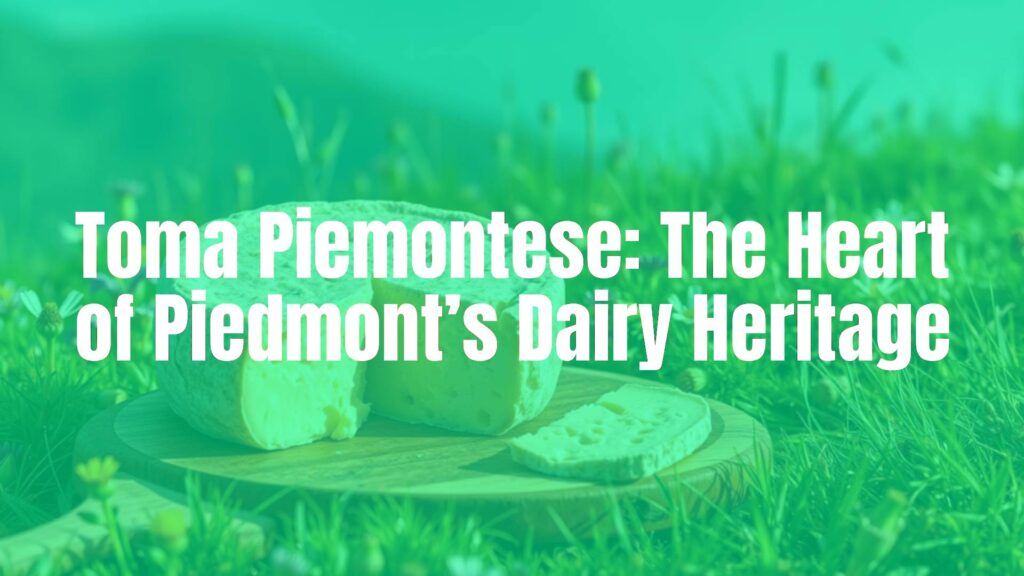An Introduction to Toma Piemontese
Toma Piemontese is a celebrated Italian cheese that hails from the picturesque region of Piedmont in northwestern Italy. Renowned for its versatile flavor and rich heritage, this semi-hard cheese has become a staple not only within its region of origin but also throughout Italy and beyond. Its approachable taste and diverse uses make it a favorite among both locals and visitors seeking an authentic taste of the Italian Alps.
Unique Qualities and Characteristics
Toma Piemontese is distinctive for its supple, creamy interior and natural, rustic rind that can vary in color from pale yellow to straw. Typically produced using cow’s milk, either raw or pasteurized, its flavor profile ranges from mild and buttery to more robust and tangy as it matures. Texturally, it boasts an elastic, almost melting consistency when young, gradually firming up with age. The aroma is reminiscent of grass, wildflowers, and alpine pastures, reflecting the region’s pristine environment where the cattle graze.
Historical Origins and Cultural Significance
The roots of Toma Piemontese stretch back centuries; its mention is found in historical records dating to medieval times. Originally made on small family farms and alpine dairies across the Piedmontese valleys, this cheese embodies the resilience and traditions of mountain life. In recognition of its unique qualities and provenance, Toma Piemontese was granted Protected Designation of Origin (PDO) status in 1996, ensuring that only cheeses produced under strict guidelines in designated areas can bear the name.
Traditional Production Methods
Production of Toma Piemontese is steeped in time-honored techniques. The milk is gently heated and curdled using natural enzymes, after which the curds are broken up and pressed into molds. Following a brief period of brining, the wheels are aged in cool, humid cellars built into the mountainsides. This maturation process lasts from 20 days for milder versions to over two months for cheeses with more pronounced flavors, allowing natural microorganisms to develop the characteristic taste and texture.
Pairings and Typical Uses
Toma Piemontese’s versatility shines through its many culinary roles. Traditionally savored as part of a cheese board, it pairs beautifully with rustic breads, cured meats, and local jams. The mild, nutty flavor complements a variety of wines—especially Nebbiolo and Barbera from the Piedmont region. In the kitchen, it melts smoothly, making it a favored choice for fondue-style dishes, baked casseroles, and classic recipes such as polenta concia. Shaved atop salads or stirred into risottos, Toma Piemontese imparts a subtle richness that elevates any meal.
Regional Variations and Distinctive Styles
Toma Piemontese exists in several styles, influenced by specific valleys and dairies. While the PDO designation covers the general method and area, you may find wheels labeled “Toma di Lanzo” or “Toma della Valle Gesso,” each bringing its own nuanced characteristics depending on milk source, seasonal herbs, or microclimate. Some cheeses are aged longer to develop sharper, more complex flavors, while others remain creamy and mild for everyday enjoyment.
Cultural Role and Enjoyment in Piedmont
In Piedmontese culture, Toma is much more than a food item—it represents community and continuity. Frequently featured in both festive gatherings and daily meals, it is enjoyed as a symbol of local identity and pride. Festivals often honor local producers, and the sharing of Toma at the table is a cherished tradition, connecting generations to the land and its bounty.
Serving Tips and Suggestions
To enjoy Toma Piemontese at its best, serve it at room temperature to allow the full spectrum of aromas and flavors to emerge. Pair it with roasted hazelnuts, honey, or fruit chutneys for a simple appetizer. For a heartier meal, try it alongside robust Piedmontese reds or use it as a melting cheese in savory pies. Its approachable yet distinct profile ensures it is equally at home in casual snacks and elegant antipasti spreads.

